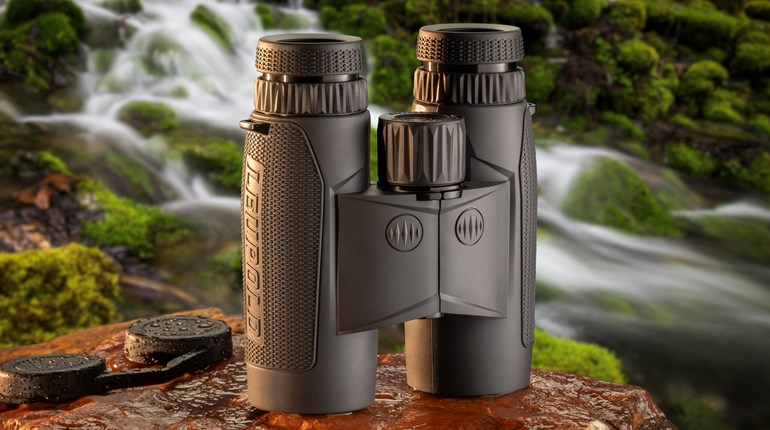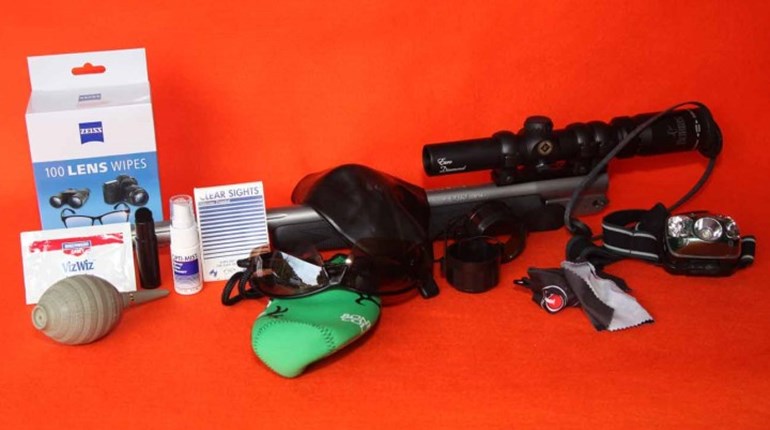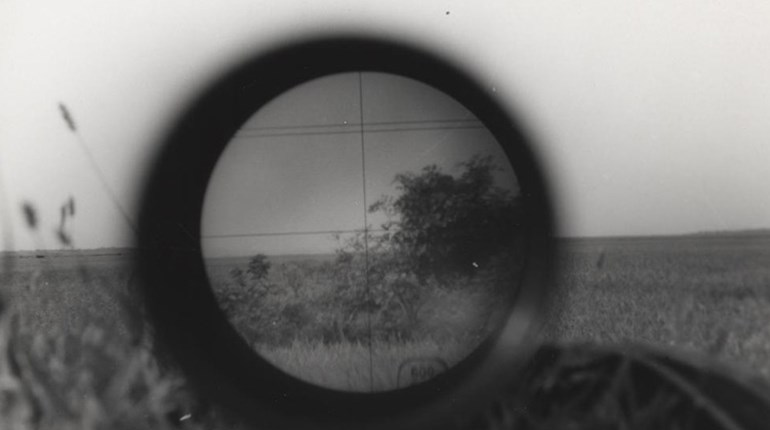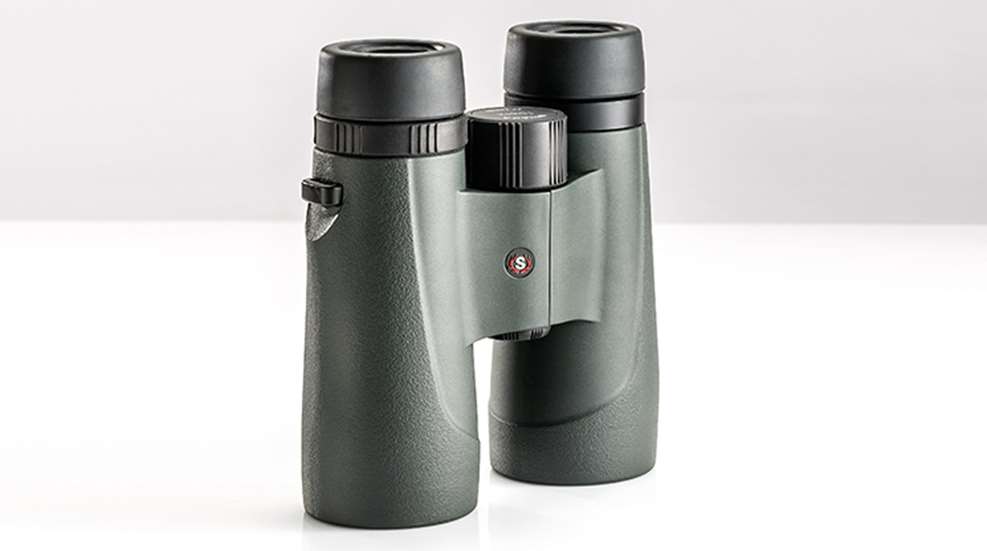
Hunters have so many good choices in mid-priced binoculars these days that arguing brands is as pointless as engaging in the ol’ .308 vs. .30-06 debate. The crowded and competitive nature of the $300-$800 bino market is a great thing for buyers—but not necessarily sellers. And so when I heard a new company named Styrka had entered the business, I had to question its approach. What more could Styrka offer in a bino with a street price of about $650 that’s not already available?
“We see that an opportunity exists to develop a relationship with hunters through customer service,” says Scott Myers, Styrka director. “We believe our warranty beats all others, and we have a serious commitment to educating the consumer not just about our products but optics in general.”
Styrka (pronounced “steer-ka”) is Swedish for strength, a nod toward the Minnesota-based company’s heritage. If the Styrka Pride lifetime warranty that covers all the company’s optics—from the $240 S3 Series 4X32mm rimfire riflescope to the $1,600 S9 Series 15X56mm bino—is any indication, Styrka has tremendous faith in the strength of its products. The warranty is clear-cut: If the optic fails or you damage it, Styrka will repair or replace it free of charge, no questions asked. No registration or sales receipt required, and the warranty is good for the life of the product even if it changes owners. The only things not covered are theft, loss and intentional damage. This is comforting, but Styrka goes a step further. Once a year you can send your scope or bino back to Styrka (you pay the shipping one way), and its technicians will clean and tune the optic to like-new condition. Styrka says turnaround time is typically within one week. Anyone who’s had sand fall into a bino’s twist-up eyecup tracks will praise this program.
Styrka may hang its hat on customer service, but a bino doesn’t do you much good if it’s constantly at the shop for repair or if the optics aren’t worthwhile from the start. After hunting with and evaluating the company’s S7 10X42mm bino, I can say the product is as strong as its warranty.
The S7 series, which includes three binos and eight riflescopes, falls near the top of Styrka’s line. It’s above the S3 and S5 models but beneath the S9 family. Two main features set the S7 bino apart from Styrka’s lower-priced offerings: extra-low dispersion (ED) glass in the objective lenses and broadband coatings the company calls SXL-MAX, which improve light transmission and contrast across the entire visual spectrum.
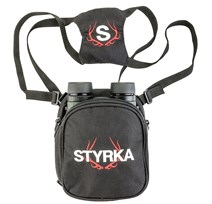 The S7 is made by a Japanese firm at its factory in China. That may sound suspiciously ambiguous, but arguing for or against the quality of an optic based solely on its country of origin is another pointless debate. Almost all mid-priced optics are made somewhere in Asia. The meaningful things to note about the S7 are its components—ED lenses to reduce color fringing, barium crown prisms (not phosphate crown as found in some Chinese-made binos), advanced coatings—and the level of quality control assumed by the company responsible for the brand. Styrka optics are evaluated during three stages of quality control before they hit dealers’ shelves. Every product is individually tested (as opposed to testing random samples from a batch or lot) for waterproofing and shock resistance.
The S7 is made by a Japanese firm at its factory in China. That may sound suspiciously ambiguous, but arguing for or against the quality of an optic based solely on its country of origin is another pointless debate. Almost all mid-priced optics are made somewhere in Asia. The meaningful things to note about the S7 are its components—ED lenses to reduce color fringing, barium crown prisms (not phosphate crown as found in some Chinese-made binos), advanced coatings—and the level of quality control assumed by the company responsible for the brand. Styrka optics are evaluated during three stages of quality control before they hit dealers’ shelves. Every product is individually tested (as opposed to testing random samples from a batch or lot) for waterproofing and shock resistance.
Of course, smart consumers perform their own tests before purchasing. A look through the objective lenses of the S7 with the aid of a flashlight reveals remarkably clean barrel interiors with no glue, dust or scratches to compromise the optical elements. Both the hinge and the focus wheel move smoothly but provide enough resistance to remain set. The rubber armor has a bit of “squish” to protect against shock and feels nice in the hands.
My two complaints regard the mechanics of the S7. Although the diopter-adjustment ring turns easily, it doesn’t lock, and it could need readjusting in the field. The “locking” twist-up eyecups feel a bit mushy when extended, and more than once during my hunts with the S7, one or the other would accidentally get bumped to an intermediate position. Unfortunately, both of these faults are common to mid-priced binos.
I compared the view through the S7 against two other 10X42mm binos in the same price range: one costing about $150 less, the other almost $100 more. In full daylight, the S7 was on par with the more expensive model in terms of image contrast and sharpness, although the view was slightly less sharp along the edges. I had no trouble picking out a couple whitetails standing in chest-high, dead grass on a hillside nearly 200 yards away. Twenty minutes after sunset, I couldn’t tell the difference between the S7 and the higher-priced bino; both let me read realtor signs up to 50 yards away and distinguish gray rocks scattered among dark-gray tree trunks at 125 yards. The S7’s performance was significantly better than the less expensive bino, proving that even with mid-priced optics, you get what you pay for.
Hunters will be happy with what they get in the Styrka S7. Besides a quality bino built with good components and backed by a no-hassle warranty, they receive a smartly designed carrying case that doubles as a chest harness in the field, along with a conventional neck strap and covers for all four lenses. There’s no argument: The S7 provides a lot of value for the money.
Technical Specifications:
• Type: roof-prism binocular
• Magnification: 8X, 10X (tested)
• Objective Lens Diameter: 30mm, 42mm (tested)
• Focusing Range: 6.5'-infinity
• Eye Relief: 17mm
• Exit Pupil: 4.2mm
• Field of View @ 1,000 Yds: 341'
• Coatings: SXL-MAX fully multi-coated lenses; dielectric-coated, phase-corrected prisms
• Dimensions: length 5.5"; width 4.81"; weight 23.2 ozs.
• Construction: polycarbonate frame, rubber armor; ED glass lenses; Schmidt-Pechan BaK-4 prisms; nitrogen-filled; waterproof; shock-proof
• Accessories: padded carrying case/chest harness, neck strap, lens covers, lens cloth
• MSRP: $779.95













